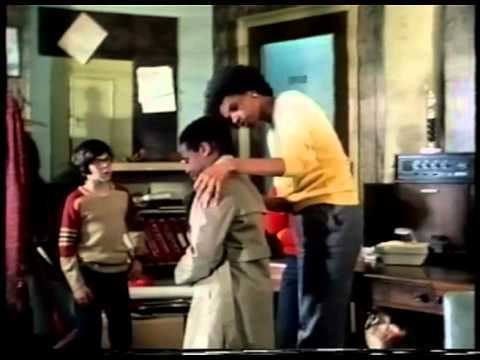7.2 /10 1 Votes
5.9/10 TV Written by Ruth Pollak Presented by Elizabeth Johnson Final episode date 3 January 1983 | 8.4/10 IMDb Created by Mark Johnson Creative director(s) Johnson B. Gordon First episode date 12 December 1982 | |||||||||||||||||||||||||||||||||
 | ||||||||||||||||||||||||||||||||||
Developed by Educational Film Center Directed by John GrayMichael Switzer Similar Gerbert, The Puzzle Place, Tots TV, Reading Rainbow, Let's Just Play Go Healthy C | ||||||||||||||||||||||||||||||||||
Powerhouse tv show pbs title sequence
PowerHouse is a United States television series produced by the Educational Film Center at Northern Virginia ETV and aired on PBS for 16 episodes in 1982 (two episodes never aired). It billed itself as "a 16-part series for young people and their families," with the target audience being primarily kids, preteens, teenagers,& young adults, and it was widely praised by educational groups. The series was later rerun by Nickelodeon in the mid-1980s.
Contents
- Powerhouse tv show pbs title sequence
- Powerhouse what have you got to lose act 2
- Description
- Uncommercials
- Other features
- The Powerhouse gang
- Episode list
- References
Powerhouse what have you got to lose act 2
Description
Set in Washington, DC, Powerhouse is focused on the adventures of a racially and ethnically diverse group of five teenagers and one adult from the inner city, based at a former boxing and sports gym headquarters turned community center for kids and teens. The center was founded by Brenda Gaines, a woman who inherited the place from her late father, a former boxing champion. The basic theme of the series is that every person is a source of creativity and power. “We all have a Powerhouse deep down inside,” it says in the theme song of the show.
Each Powerhouse episode dealt with significant personal issues that affected both kids and teenagers such as alcoholism, peer pressure, physical fitness, and more, but they were combined with fast-paced action-adventure stories in which the group often had to solve a mystery or prevent a crime. For instance, in one episode they had to uncover the head of a racketeering operation that threatened to put Brenda and PowerHouse out of business. In another episode, they tried to track down the source of a potentially lethal food-poisoning epidemic, a task that took on even greater urgency when one of the group became infected.
Uncommercials
One of Powerhouse's innovations was the use of what the show called Uncommercials. Since the show ran on PBS, which is commercial-free, the producers created 30- to 90-second commercial-like breaks that would air during the broadcast. Instead of selling products, uncommercials would sell a theme, often in entertaining or humorous ways.
One uncommercial, for example, featured a 12-year-old boy who asked, “How do I get a girl to like me?” Several boys and girls of around the same age then offered suggestions. Another one asked, “What is a friend?” and several teenagers answered, one of which was future Saturday Night Live star Ana Gasteyer (her answer: “Someone you can be weird with.”) in her first-ever TV appearance.
Another uncommercial featured Henry Winkler as a celebrity organ who gave advice on how to take care of your lungs.
Another popular uncommercial theme was Don't Just Sit There—Do Something! which encouraged viewers to do something active or constructive.
Other features
Another Powerhouse features was a salute to a particular youth organization, such as the Boy Scouts of America; these salutes preceded at least one of the uncommercials.
The Powerhouse gang
Episode list
- "With a Little Help From My Friends (Part 1)"
- "With a Little Help From My Friends (Part 2)"
- "Life or Breath"
- "Master of the Art"
- "You Make Me Sick"
- "Celebration"
- "Something for Nothing"
- "Cheers"
- "Name of the Game"
- "One of the Gang"
- "Something Ventured" (the pilot episode of the Powerhouse series)
- "Help Wanted"
- "What Have You Got to Lose?"
- "Big Devil"
- "Fit to be Tied"
- "The Short Life of Lolo Knopke"
- "The Missing Horse" (1984)
- "Hyperactivity" (1984)
